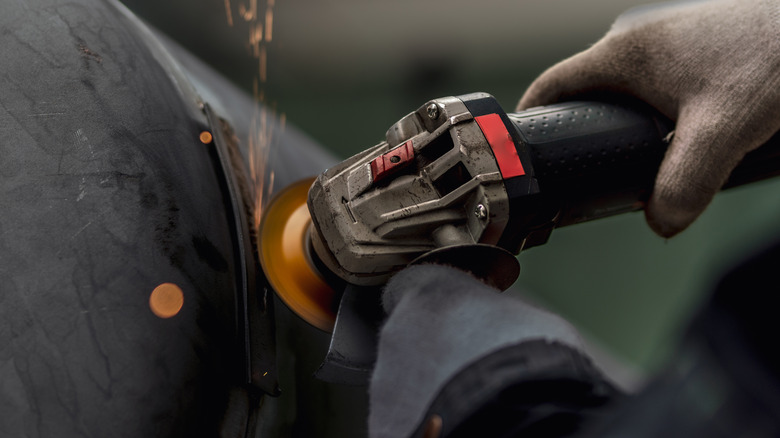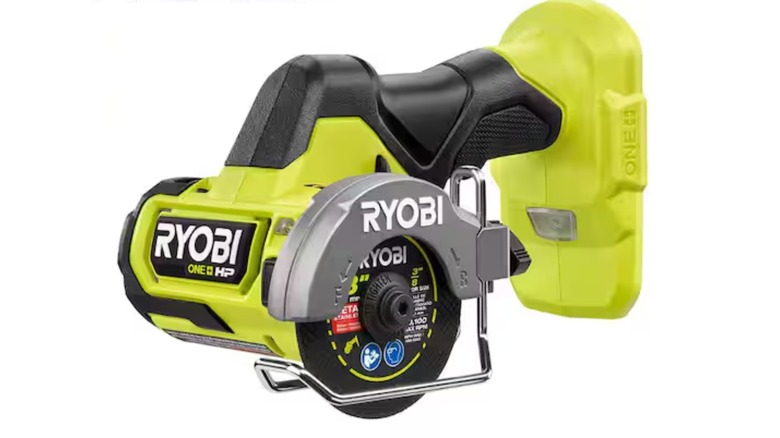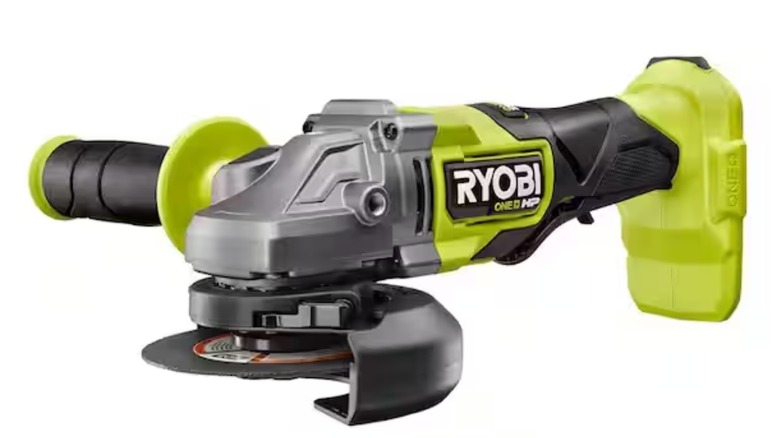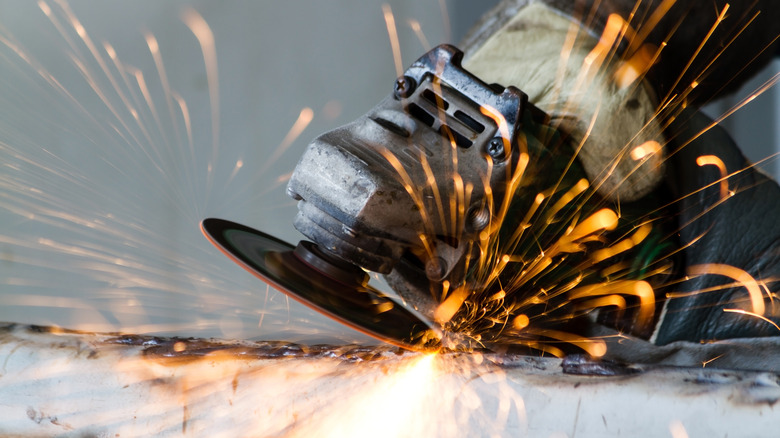Cut-Off Tool Vs. Angle Grinder: What's The Difference And Can One Replace The Other?
We may receive a commission on purchases made from links.
The world of power tools is vast and has become even more so as different brands have entered the marketplace and more places to buy and sell vintage power tools have arisen. Not only is it important to decide which power tool brand is best for you, but it's also necessary to determine the specific tools you need. After all, many tools aren't cheap and odds are you only have so much storage space, so it's smart to shop wisely. For instance, if you're in a career field or embrace a hobby that entails precision cutting of wood, ceramic, or metal, you will want to know which tool does the job best.
There are several power tools out there that can create clean, specific cuts in the aforementioned materials and more, but a couple stand out as being well-equipped to handle such jobs: the angle grinder and the cut-off tool. Both are relatively compact, handheld tools comprised of handles, safety guards, and discs that spin at high speeds to make cuts. You can find both in corded and battery-powered form, and they're available from most major power tool brands.
Angle grinders and cut-off tools might seem like the same tool, but there are some notable differences that set them apart from one another.
Using a cut-off tool
As noted previously, a cut-off tool is handy to have around if you frequently work with a variety of different materials. They're not hard to find, and their compact nature makes them especially good at maneuvering in smaller workspaces. Most can even be operated using just one hand. Despite their smaller size, they can spin up to an impressive 20,000 rpm – and that's just the battery-powered ones. Corded cut-off tools can get into the neighborhood of a strong 24,000 rpm.
It's worth recognizing that cut-off tools are very committed to their name as they're not designed for much more than making straight cuts; they won't be much help for tasks that require detailing, sanding, and other specialized work. They're also at their best when they're working on jobs requiring cuts into thinner materials. These limitations make cut-off tools a bit of a niche inclusion to one's arsenal, but there's no denying that when it comes time to perform within its wheelhouse, it delivers in spades.
Using an angle grinder
The angle grinder is no slouch when it comes to making clean cuts either, and many of the angle grinders from major brands can handle heavy-duty tasks. At the same time, most of them are relatively lightweight and have two handles — one being adjustable – making them easy to operate with precision while the wheel spins and chips away at whichever material you aim to cut or grind. Though they spin anywhere from 9,000 rpm on cordless models to 11,000 rpm on corded ones, they can handle all kinds of material with ease.
One of the major benefits to angle grinders is they can do more than just make straight cuts. They're also good for shaping, grinding, and sharpening, so you can bring them along for all kinds of jobs. Due to their size and shape, however, they're not the best at squeezing into tight spaces, which could cause some headaches while trying to plow through a workday.
Still, negatives aside, angle grinders are undeniably versatile. From the different tasks they can handle to the materials they can cut through, you'd be hard-pressed to find a cutting or grinding job they can't help out with.
In most cases, an angle grinder is a fine substitute for a cut-off tool
With their specifications, strengths, and weaknesses in mind, how do angle grinders and cut-off tools stack up against each other? While both are strong tools that can get a range of jobs done, cut-off tools aren't entirely necessary for most jobs. As established, they're good in tight spaces and can handle tasks with thin material and straight cuts, but that's about it. Most casual laborers won't be in dire need of a cut-off tool, so long as they know how to utilize angle grinders to their fullest potential.
Even though they can prove a bit unwieldy in tight areas, angle grinders can pretty much do everything a cut-off tool can do and then some. In addition to cutting straight lines, they're able to perform other cutting and smoothing tasks and handle more durable materials. If you work with wood, metal, and ceramic on a regular basis, opting to own both isn't a bad idea; however, if you're on a tight budget or don't find yourself using such power tools that often, there's nothing wrong with going with an angle grinder alone.



